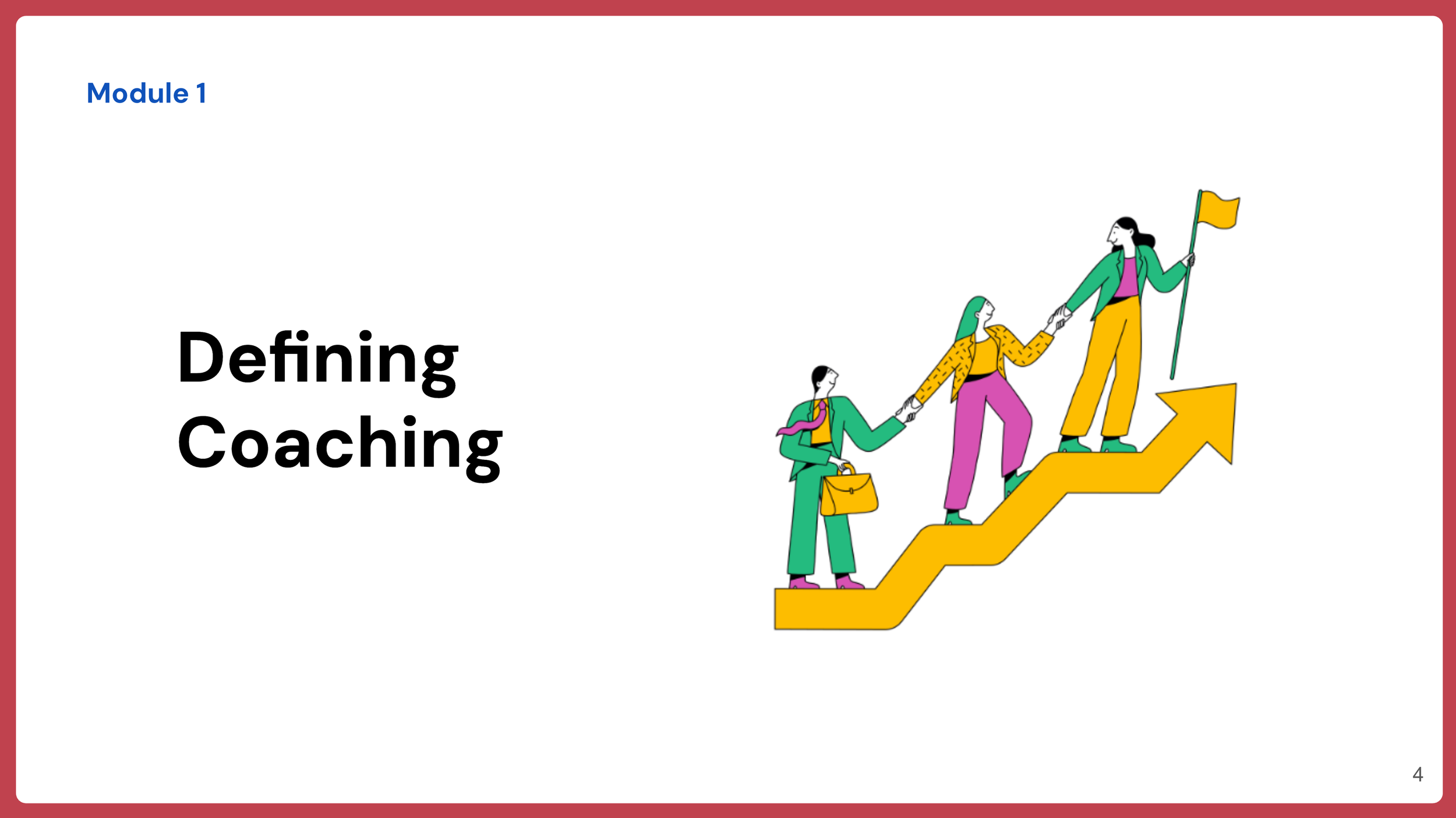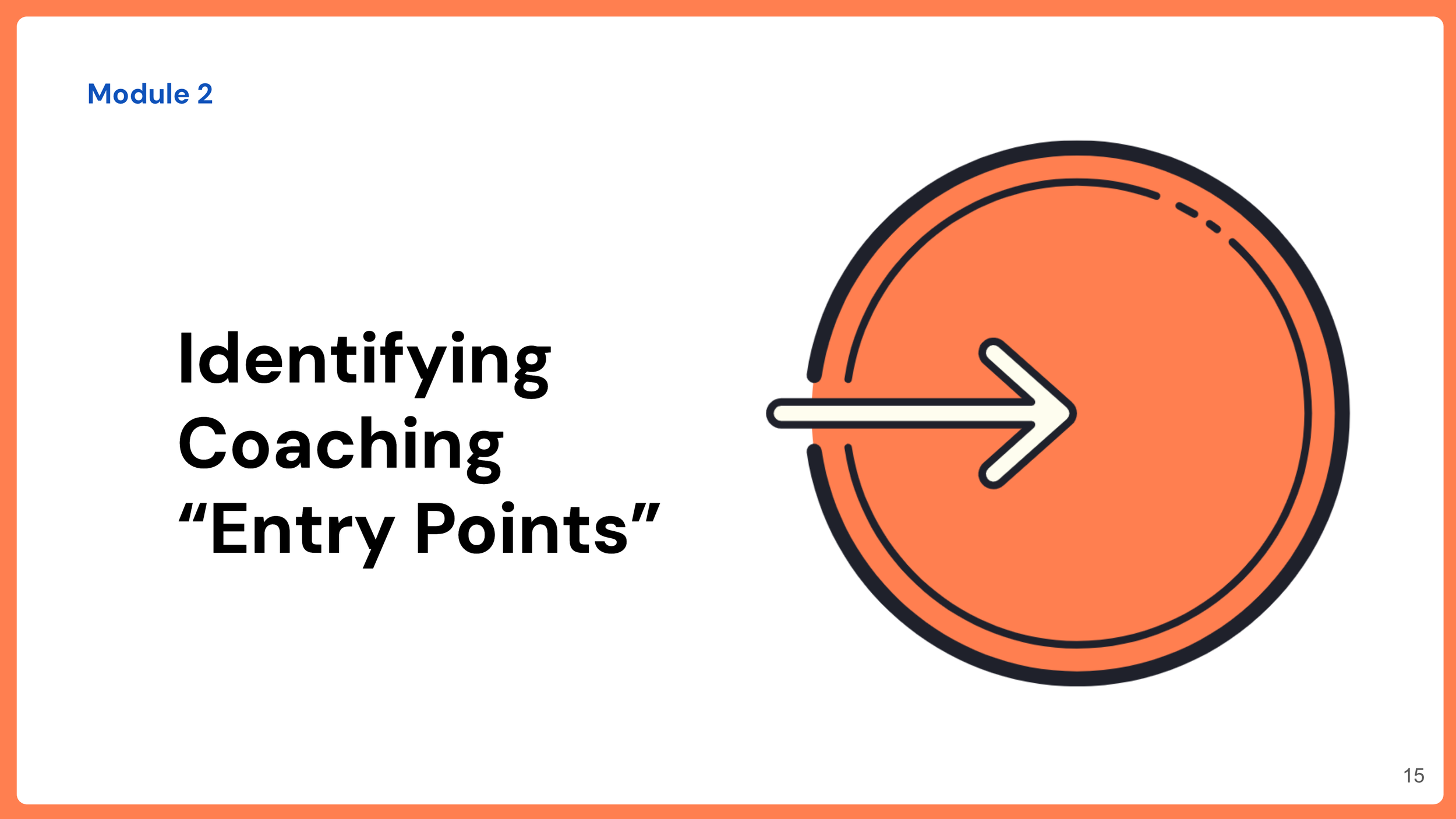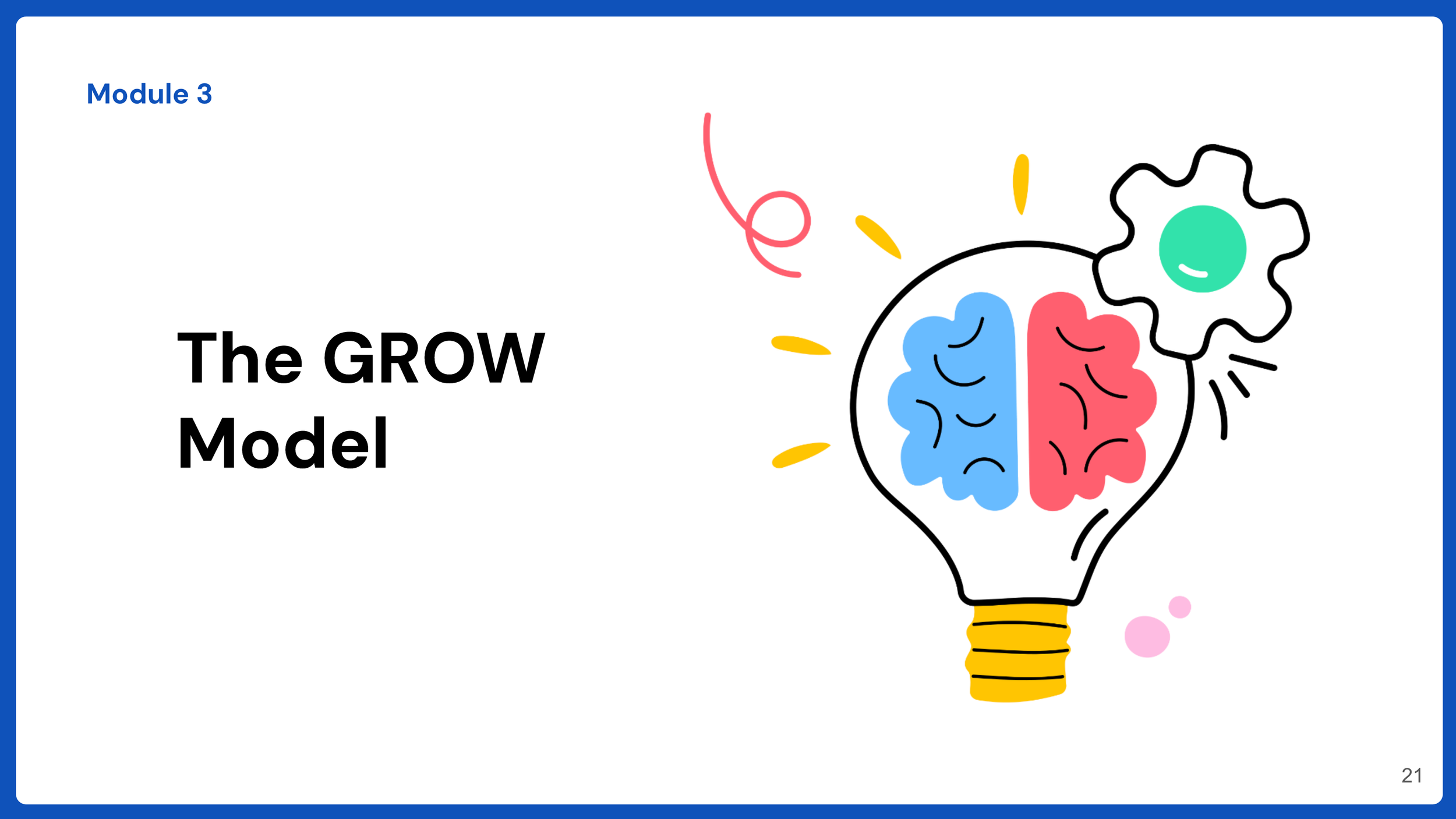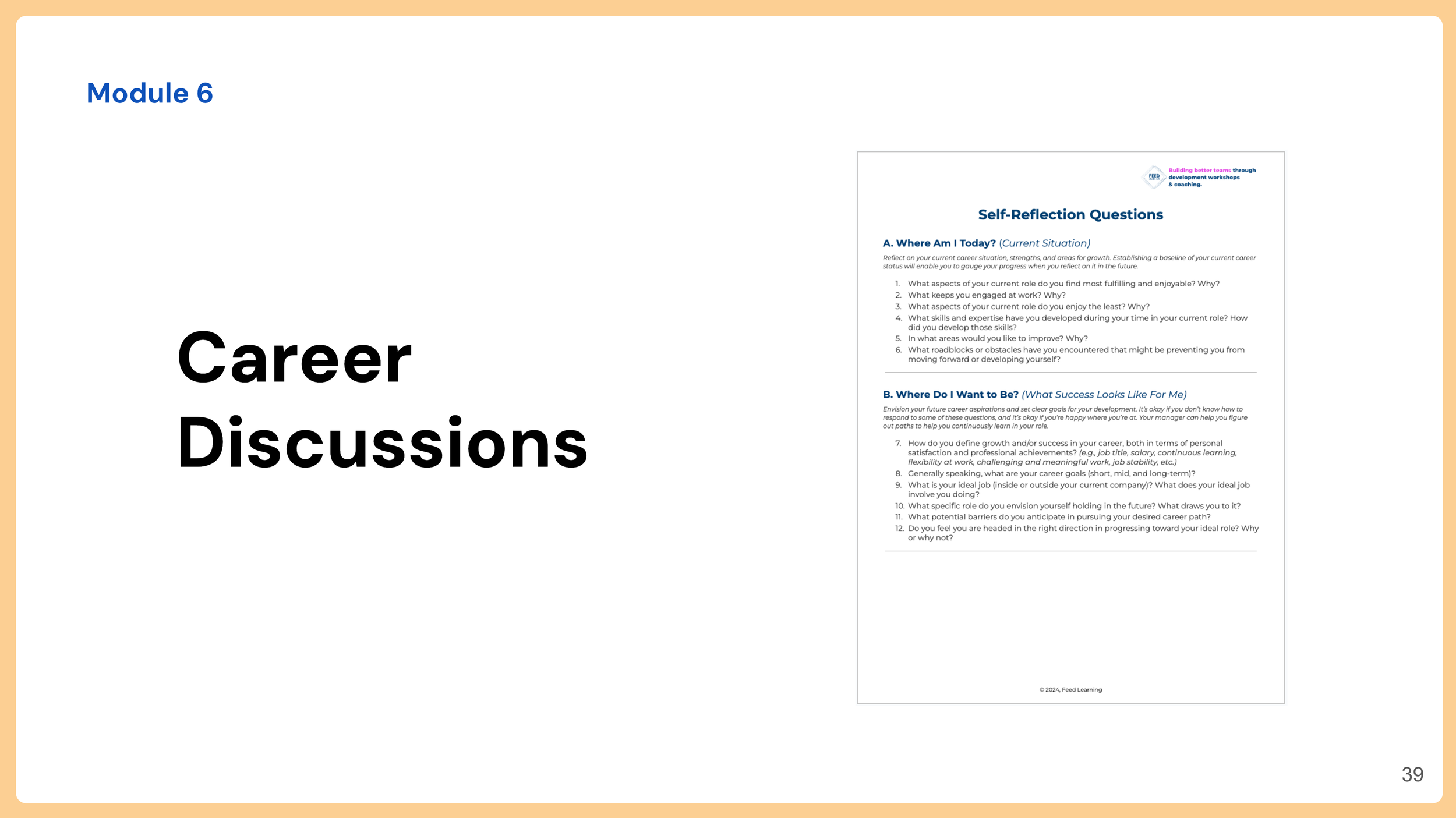Coaching & Developing Others
Course Summary
Defining Coaching
“Managing” is telling people what to do; whereas “coaching” is asking questions to helping the employees find the solutions themselves.
Coaching helps diagnose underlying problems faster, speeds up problem-solving skills, and develops people skills faster by assisting individuals in clarifying their thoughts.
People learn best when they reflect, ideally in collaboration with others.
People can find out solutions to their problems more when they talk it out loud (with others).
Identifying Coaching “Entry Points”
Most common reasons to coach someone include: helping solve a problem or make a decision, dealing with people conflict, boosting their confidence, planning for project, or reflecting on a project/experience
Coaching is not effective when: the employee is overwhelmed; you haven’t established trust and rapport with the individual; the employee is new or does not have the knowledge or skills to succeed; or in crisis situations.
The employee needs to be ready and available for coaching to be effective.
Just about every behavior is coachable except for an employee’s motivation/will/engagement.
The GROW Model
GROW is a coaching model that stands for Goal, Reality, Options, Way Forward.
To help an employee, you first need to identify the problem by asking questions about the Goal and Reality.
Once you’ve identified the problem, then you can move towards a solution by asking questions about the Options and Way Forward.
Goal: What do you want to happen? What does success look like to you? What do you hope to achieve?
Reality: What are your obstacles or challenges? What assumptions are you making? What concerns you most about it?
Options: What are your options? Who or what can help? What have you tried so far?
Way Forward: What will you commit to doing? What is your plan and timeline? When should we check in about it again?
Role Play
Role playing is everyone’s favorite part of a training workshop, right?!
In this section we asked for real-world scenarios to help coach each other and apply what we’ve learned so far.
When It’s Not Working Out
When people don’t perform up to standards, it’s either because they can’t (no skill) or they won’t (no will). There’s no third option.
Before we give feedback, we have to set clear and specific expectations first. Ensure our expectations follow the S.M.A.R.T. method (Specific, Measurable, Attainable, Relevant, Time-bound).
Lead with empathy by using validation statements to help them feel heard, seen, and understand e.g. “I understand that this has been annoying for you” or “I’m sorry to hear about your experience and wish this wasn’t happening to you.”
Once people feel understood, they’re more open to cooperation.
Set your expectations clearly e.g. “My expectation is X won’t happen again” or “ It’s important to know that when you [behavior and impact].”
When coaching isn’t working, go into Tell Mode and direct them what to do.
Career Discussions
Some people know where they want to be; some people are fine with where they are at; and some people never thought about their future career.
As managers, it’s our job to provide the tools, resources, and coaching to develop our employees.
Everyone is on a different part of their career journey. We can use career development questions to understand the employee’s aspirations and guide them accordingly.
Want more Leadership Development?
If you’re interested in additional opportunities to develop your management skills, join our Newsletter.







